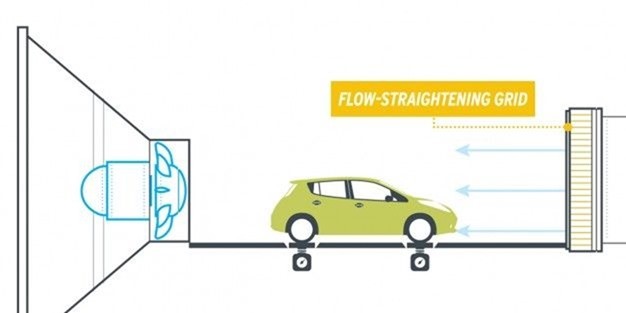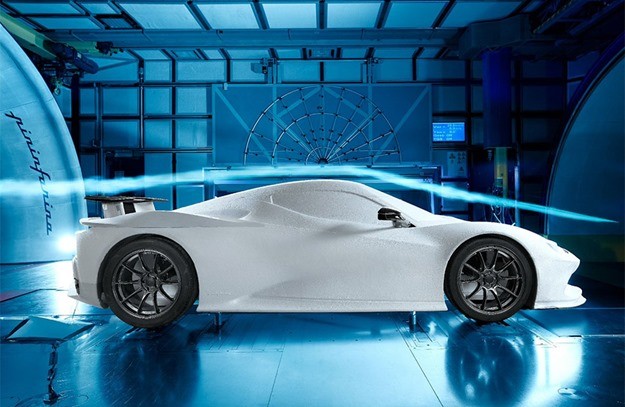Wind Tunnel Testing: Expectations vs. Reality | 10 Unconventional Knowledge About Wind Tunnel Testing Procedure That You Can't Learn From Books

Wind Tunnel Testing
Aerodynamic development is done almost entirely experimentally, guided by empiricism based on the experience. The primary list facility is the wind tunnel. Wind tunnels, in the broadest sense, try to simulate the aerodynamic conditions that a vehicle would experience in its operating environment. However, the aerodynamics generates in a wind tunnel is not identical, but merely equivalent (to some degree) to the aerodynamic experienced “on-road”. For example, in a wind tunnel, both the far-field boundary and the ground boundary are represented in some convenient and yet useful manner.
In many sectors, wind tunnel testing is a necessary component of the design and development process. When air flows over or around a test model, whether it is fixed or dynamic, wind tunnels may offer valuable information into the impacts of the air on the model.
Wind Tunnel Testing Procedure
Likewise, the test-section flow velocity (around a stationary vehicle) attempts to re-create the relative motion between a moving vehicle and the surrounding (stagnant) environment. Where differences exist between wind tunnel and road, it is important to know how they influence the results that rate generated by wind tunnel testing. This has been extensively studied for many years and continues to be an area of enduring interest. It has resulted in many useful ways of dealing with the lack of their replication of on-road conditions.
As a result, wind tunnel assessments are critical in the aerospace industry since the physics of flight is dependent on the correct flow of air to generate lift and decrease drag. Although we live in an era of sophisticated computer simulation, aerospace engineers continue to depend on the testing of physical models to validate computer data and establish baseline aerodynamic knowledge.
History of Wind Tunnel Testing
Historically, the wind tunnel testing of automobiles started with small-scale models. Scales like 1:4 or 1:5 were preferred in Europe, the somewhat larger 3/8 scale in the U.S. The advantages of small-scale testing are that the models are cheaper than full- scale ones, are easy to handle, and can be quickly modified. Furthermore, one small wind tunnels are needed, and these are more generally available and can be rented at moderate cost.
For two reasons, small-scale testing was eventually only rarely used. At first, this was because test results from partial-scale models very often did not reproduce full-scale values with the accuracy needed. This deficiency was partly due to a lack of geometric similarity in the models, and partly to the unpredictable effects of Reynolds number.
Wind Tunnel Testing of Vehicles
However, geometric similarity is not a fundamental problem but rather a matter of the skill and care of the model maker. Also a Reynold-number gap on the order of two can be bridged by artificially increasing the turbulence level of the wind-tunnel. Consequently, small-scale testing has again come into favour and is used by some car manufacturers with great success.
The second and even stronger objection to small-scale testing is non-aerodynamic in nature. Vehicle exterior design is done in full-scale, because shapes in small scale cannot be adequately assessed aesthetically. Therefore, a full scale model always exists, and if it is built on a realistic chassis, such as the one from the preceding model year, it can also be used as the wind-tunnel model.
Aerodynamics is critical in the never-ending search for more fuel-efficient vehicles, and it plays a significant role in vehicle design. Wind tunnels are often used by the major automobile manufacturers to test and refine their newest models. Despite the fact that these firms may analyze a whole vehicle, they will also examine the aerodynamics of specific components such as grilles, side view mirror, air dams, rear-deck spoilers, and roof racks in order to determine their effectiveness.
Consider how essential aerodynamics is in the passenger vehicle business, and then consider how crucial it is in the racing car sector. An even small lead may be the difference between taking the checker flag and suffering through "the anguish of loss" in a high-speed race. As with full-size vehicles or individual components, race teams regularly submit scale models to wind tunnel testing in addition to full-size cars or individual parts.
Aerodynamic Testing
The aerodynamic forces and moments experienced by a vehicle in its operating condition are often of crucial interest to aerodynamicists. Force and moment balances have served as the most direct tool for determining these qualities. Much progress has been made in minimizing their sources of error. Moreover, the motivation to understand the causes of dynamic loads and to create more opportunities for the diagnosis of flow conditions has led to significant advances in the kinds of tools that are available.
Companies in the automotive and aerospace industries have relied on conventional manufacturing processes to create models for use in the wind tunnel testing. They have converted metal and plastic into test models via the use of milling, turning, and manufacturing techniques. These procedures require programming, setup, and operator monitoring, all of which contribute to the overall time and expense of the operation. When you consider the quantity of material that ends up as chips on the floor, it is possible that the material expenses will be significant.
Wind tunnel testing is beneficial to more than just automobiles and aircraft, though. This study is equally as essential for stationary structures as it is for mobile ones. Wind-related impacts on high-rise structures, bridges, and stadiums are given considerable attention in the architectural profession, particularly when they are situated in regions prone to severe weather. A scale replica of the building is connected to a test rig that includes topography and ground characteristics in the surrounding area. It is necessary to put the test rig in the tunnel in order to gather measurements. Together with historical data on wind speeds, these findings are used to estimate the overall load on the structure and its potential consequences on the environment.
Wind Tunnel Testing Software
These tools, many of them derived from computer-based devices and methods, have helped shed light on many previously unknown flow phenomena, both local and global. The plethora of these tools ranges from simple subjective flow visualization to very complex quantitative measurement systems. They have been used in applications for both external and internal flow situations.
https://blogmech.com/wind-tunnel-testing/






No comments: